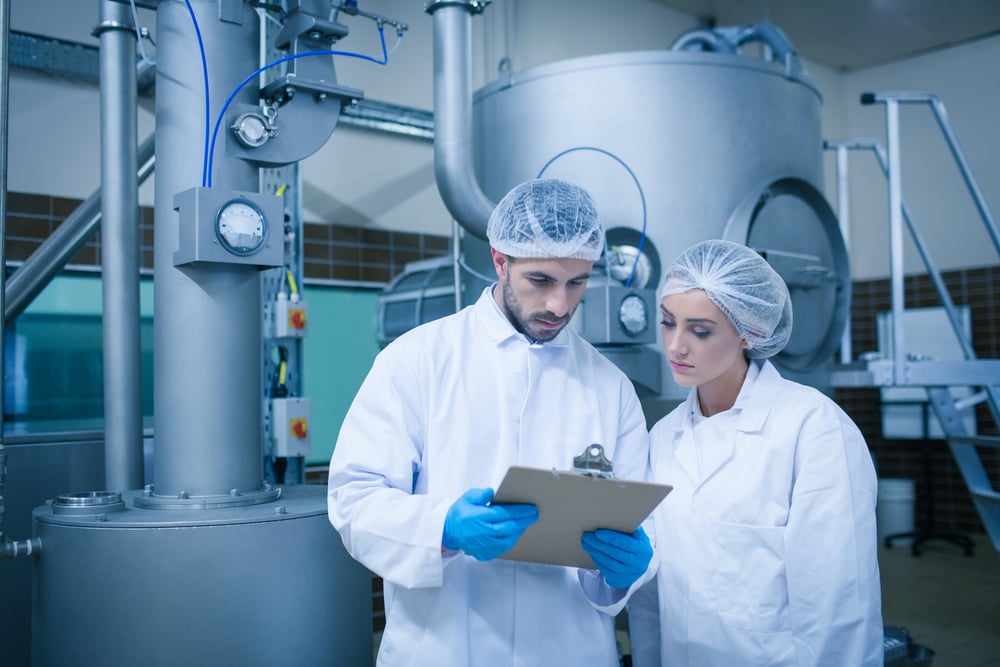Technology brings several benefits across the board that will help you improve profit margins, stabilise supply chains and delight consumers, regardless of the size of your organisation.
But technology isn’t a blanket solution to all of the challenges currently facing your business. In recent years, we’ve seen new and emerging technologies in the food production industry, such as automation, AI and machine learning, ensure quality and keep labour costs low. While some solutions may look like a great fit on paper, the key is finding the right technology to suit your specific needs.
So, how do you make the right decision with so many rapidly evolving technologies on the market?
- Know your processes
- Research thoroughly and always think in terms of need
- Identify tech that can grow with your business
- Ensure the tech comes with technical support
- Don’t take shortcuts with training
Know your processes
It's not enough to know that you want to improve processes and grow your business – you need to know exactly what’s needed to achieve this. Plus, your technology should complement your existing processes.
So, start from the ground up and map out your current business processes. Get information from your teams who actually do the tasks at each level to give you a clear view of what’s happening. If done well, the areas for improvement will be obvious and with this knowledge, you can make better informed decisions on what is and isn’t needed.
Some areas that you might be hoping technology can help include:
- Finance
- HR
- Manufacturing
- Supply chain
End-to-end solutions like an ERP system can join all of these business processes together and remove siloed data to deliver “one version of the truth”. Go one step further and invest in food-specific ERP software that can:
- Deal with the variances of ‘living’ products
- Cater for products that need special treatment
- Manage the goods in and out stages
- Handle the complexities of foodstuff
- Prepare for the inconsistency of food products
- Satisfy supply and demand
Research thoroughly and always think in terms of need
Rushing into implementing new tech will inevitably end in your business building up software waste due to you not using it properly or ignoring it altogether.
Avoid software waste by identifying the key people inside your organisation who will be affected by the technology. They have a clear vested interest in finding the most effective solution and should be the team that drives your research and evaluation efforts. Ask them about their expectations and let them come up with new ideas.
Plus, conduct software assessments at least twice a year to prevent any cases of duplication. It can be tricky to know what new tech to go for, that’s why many food businesses decide to work with a digital transformation agency in order to:
- Mitigate risks
- Take pressure of their in-house team
- Control the cost of transformation

Identify tech that can grow with your business
Implementing new technology is likely to be a significant investment, so carefully consider what you’re going to buy.
Take time to look around food-specific business forums and see what people are saying. That way, you can find out:
- What technology other businesses like yourselves are using
- What difficulties they’ve faced
- If they’ve found a particular device/software package became outdated quickly
Plus, you must evaluate if the new technology is scalable and aligns with your future business plans.
Some questions your team should be asking when assessing the scalability should be:
- Is the solution(s) innovating at the same pace as your plans for growth?
- Does the solution(s) integrate with any of your existing (or planned) technologies?
- Are the systems cloud-based? This can increase agility, flexibility and scalability
- Will the systems be user-friendly enough for you and your workforce?
- How quickly can you get the new system up and running?
Ensure the tech comes with technical support
The chances are you won’t have a dedicated in-house team to support your new systems. So, making sure your new tech comes with quality technical support should be a top consideration.
This will ensure the implementation process is as smooth as possible and help your existing teams understand more efficient ways of operating the advanced technology.
The best business solutions should offer support that:
- Provides ongoing development of your business applications
- Has a 24/7 service desk that serves as a single point of contact
- Helps your business maximise its technology investments
- Includes configurable services that can be tailored to your needs
- Offers scalable infrastructure services based on the best brand providers
To read more about our incident management, solution operation and optimisation services, click here.

Don’t take shortcuts with training
You can invest in new technology but if nobody in your business knows how to use if effectively, then your company still won’t be working at optimum efficiency. Don’t take shortcuts with training your team either – without a proper process in place, your team may not understand the reason for change and become counterproductive.
By upskilling your team, you’ll not only make sure your workforce knows how to use the new tech, but also maintain their buy-in for any future technological change.
Align your technology adoption efforts with digital transformation
As you can see, choosing the right technology for your business can be difficult. Not only do you want to avoid wasting time and money adopting ineffective solutions, but picking the wrong solution can also introduce new problems into your system.
Choosing the right technology is just one part of the overall digital transformation puzzle. Digital transformation is about understanding the value of technology and using these solutions to improve your processes while ensuring they fit with your business goals.
Download our guide to digital transformation by clicking the button below.

